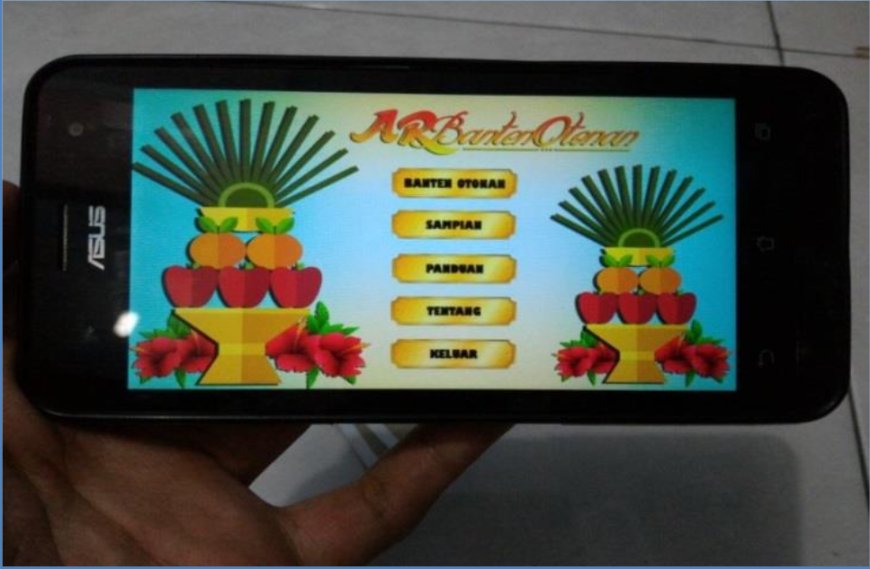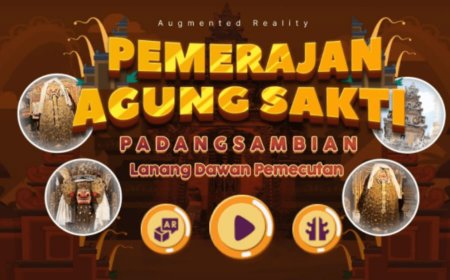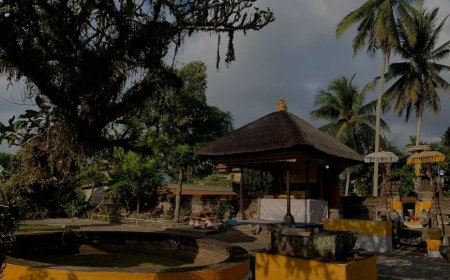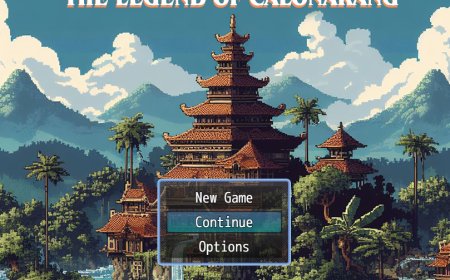AR Banten Otonan: Technological Innovation to Educate the Making of Banten Otonan in Bali through Augmented Reality Technology
Information technology now serves as a bridge that connects tradition and modernity. An Augmented Reality (AR) based application has been developed to help preserve and teach the process of making Banten Otonan, a very important Hindu yadnya ceremony in Bali. This application not only offers interactive learning but also brings the nuances of tradition into the palm of the hand through Android-based smartphones.

Banten Otonan is an offering used in the Otonan ceremony, which is a commemoration of the day of birth according to the Balinese Wuku Calendar, held every 210 days or six months. The process of making Banten Otonan involves various components, the most important of which is Sampian. Unfortunately, this skill is starting to be forgotten by the younger generation due to limited access to information and the complexity of the manufacturing process. In response to this challenge, the Banten Otonan AR application comes as an innovative solution. The app uses Augmented Reality technology to visualize and teach the steps of making Banten Otonan and Sampian in the form of 3D animations and videos. “With AR technology, users can see and follow the process of making Banten Otonan interactively and in detail,” said I Gede, one of the developers of this application.
Scene View of Augmented Reality Making of Banten Otonan
The ARBantenOtonan app features realistic 3D animation models of each stage of making Banten Otonan. Equipped with narration voice and text explaining each step, this application provides a complete and easy-to-understand learning experience. Not only that, this application also provides a 3D animation video for the making of Sampian, one of the important components in Banten Otonan.
The use of AR in this application allows users to learn in a more interesting and interactive way compared to conventional methods. This application can be an educational medium so that the tradition of making Banten Otonan can be preserved and learned by the younger generation in a relevant and interesting way.
Scene View of Augmented Reality Sampian Making
The results show that the Banten Otonan AR application is able to present information in a more effective and interesting way. AR technology enables the integration of virtual objects into the real world, providing an immersive and deep learning experience. It is expected that this application can be used in schools, cultural centers, and households as an effective learning tool.
With the rapid advancement of technology, it is important to find new ways to preserve and teach cultural heritage. The Banten Otonan AR app is a step forward in utilizing technology for educational purposes and cultural preservation. This app not only helps preserve traditions, but also teaches Balinese cultural values to the younger generation.
Guide Scene Display
The development of the Banten Otonan AR application is clear evidence of how technology can be used to support and strengthen cultural education. With easy access through smartphones, this application can be used by anyone, anytime, and anywhere, making learning about Banten Otonan easier and more fun.
3D Animation Video Play Button Testing
Children today are very familiar with technology. With this app, it is hoped that they can connect with their culture and traditions in a more relevant and engaging way. This is a way to ensure that Banten Otonan remains known and appreciated by future generations.
The ARBantenOtonan app is an innovation that combines modern technology with ancient traditions, bridging the past and the future. With this app, the younger generation of Bali can continue to learn and preserve their cultural heritage, ensuring that the tradition of making Banten Otonan remains alive and cherished in this digital age.
Source: “EDUCATIONAL APPLICATION DESIGN OF AUGMENTED REALITY-BASED BANTEN OTONAN MAKING”, I Wayan Mei Sujana, Final Project of Information Technology Study Program, Faculty of Engineering, Udayana University, 2017.





























































